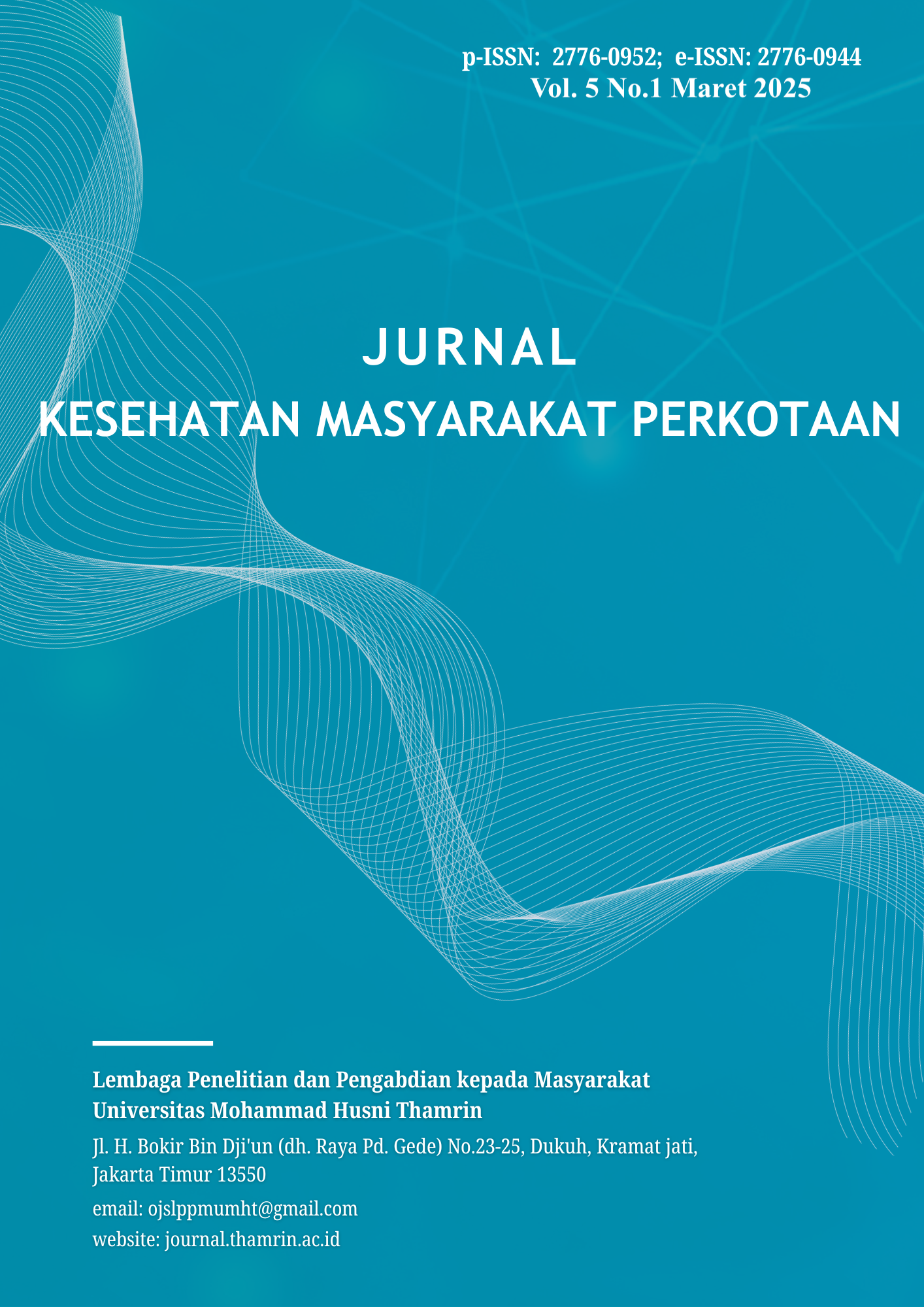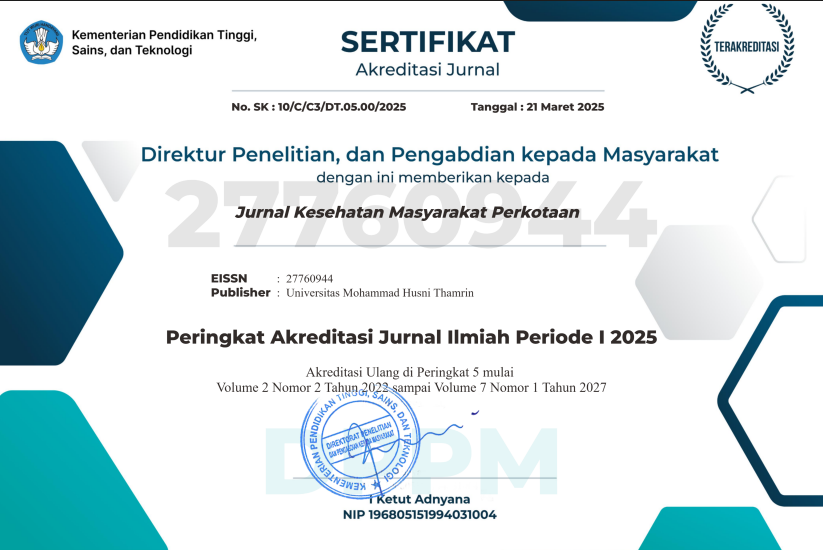The Relationship between Supervision and PPE Compliance (Case Study: Workers at PT. X)
DOI:
https://doi.org/10.37012/jkmp.v5i1.2788Abstract
Background: Human resources are a factor for an agency or company that plays an important role, because humans are living assets that need to be fostered and developed. Supervision is a process to measure the performance or implementation of an activity or a regulation that has been established whether it is implemented as stipulated or not, the purpose of supervision is to maximize the level of discipline in the workforce in using PPE when working and supervisors can also give sanctions to workers who commit violations. Compliance comes from the basic word obey, which means discipline and obedience, worker compliance with K3 practices has a significant impact on productivity, efficiency, and general welfare in the workplace. Purpose: The purpose of this study is to analyze the relationship between supervision and PPE compliance in workers at PT. X. Method: This research method is qualitative with a cross-sectional design and this research instrument uses the Simple Random Sampling technique and the Slovin formula. Results: The results of this study were processed using the Chi-square statistical test which obtained a p-value of 0.014 which means there is a relationship between supervision and PPE compliance. Conclusion: There is a significant relationship between supervision and PPE compliance in zone 2 workers at PT. X. Suggestions for improvement given are to carry out routine patrols, ensure the presence of supervisors at every work activity, and provide firm warnings for violations of the use of PPE.
Downloads
Published
How to Cite
Issue
Section
Citation Check
License
Copyright (c) 2025 Salsya Nur Meidyna, Nugrahadi Dwi Pasca Budiono

This work is licensed under a Creative Commons Attribution 4.0 International License.
Jurnal Kesehatan Masyarakat Perkotaan allows readers to read, download, copy, distribute, print, search, or link to the full texts of its articles and allow readers to use them for any other lawful purpose. The journal allows the author(s) to hold the copyright without restrictions. Finally, the journal allows the author(s) to retain publishing rights without restrictions Authors are allowed to archive their submitted article in an open access repository Authors are allowed to archive the final published article in an open access repository with an acknowledgment of its initial publication in this journal.

Lisensi Creative Commons Atribusi 4.0 Internasional.











